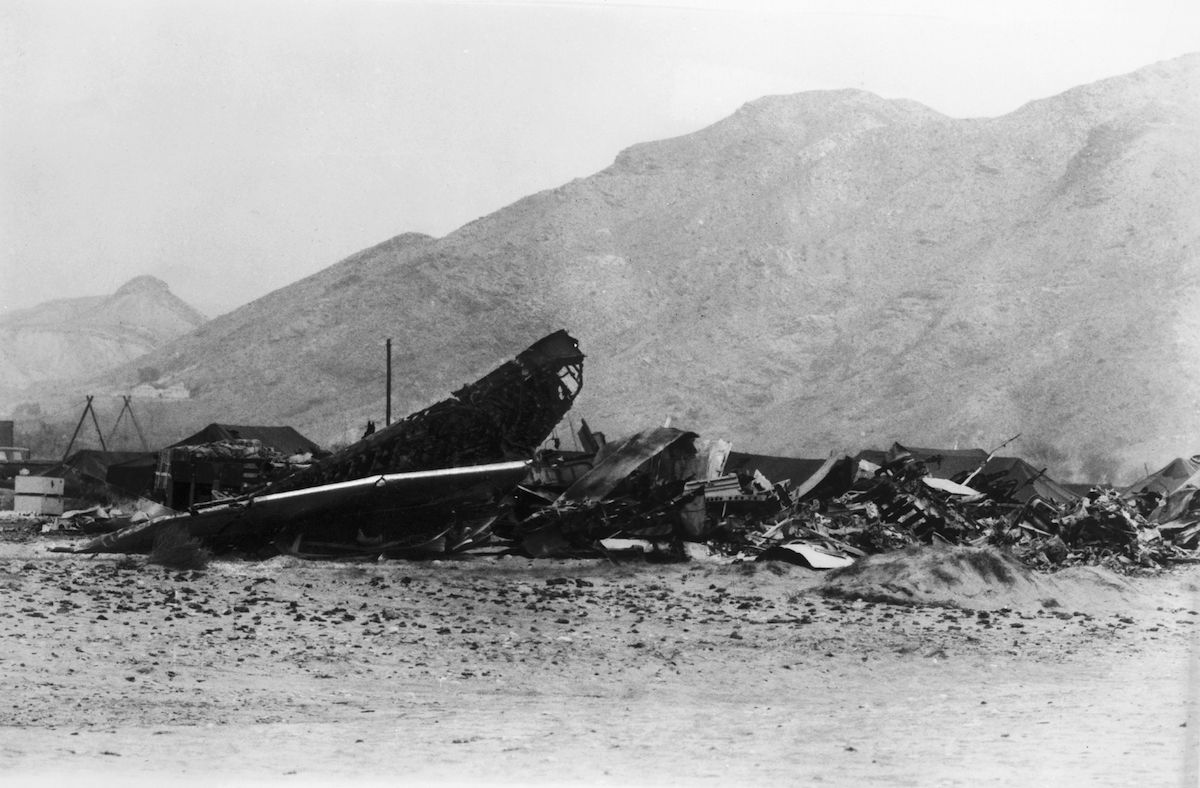
At first it seemed that the incident in the air over Spain in January of 1966 was tragic, but not catastrophic: an Air Force plane and a refueling jet tanker had crashed in midair. But while the airmen who managed to parachute away from the accident were easily found, the cargo proved more elusive. The plane had been carrying thermonuclear bombs—unarmed and protected, but nuclear weapons nonetheless—and only three of the four that fell could be located. Hundreds of American and Spanish workers combed the area over which the crash had occurred, but with no luck. The bomb was missing.
It was not until Mar. 17, 1966—exactly 50 years ago—that the missing hydrogen bomb was finally recovered, 2,500 ft. underwater off the coast near Palomares, by a submarine nicknamed Alvin, which was kitted out with underwater cameras and a claw capable of lifting objects from the seabed.
“The discovery was a fantastic mixture of technical skill and luck. It matched finding a needle in a haystack—or ‘perhaps in a hayfield,” as one official put it,” TIME noted the following week. “For all the tips from fishermen and experts’ calculations, the bomb could have landed just about anywhere over an area of scores of square miles, and the parachute could have acted as a sea anchor in the swift coastal cur rents, tugging the bomb into less accessible depths. Then, too, the sea floor’s shifting mud might have ultimately hidden the bomb from view.”
Within a few weeks, the Navy managed to haul up the bomb, which weighed over a ton. As TIME reported, the once-hush-hush operation was suddenly a media frenzy:
Not surprisingly, the U.S. was eager to show off the nuke, to prove at least that the Costa Bomba, as it was being called, was demonstrably safe for tourists—in addition to rebutting in advance any murkey [sic] insinuations from Moscow that the recovery operation was all a big hoax.
As it was, the H-bomb’s debut was about as razzmatazz as a church-sponsored striptease. Its size and megatonnage were not announced, and technicians carefully covered all revealing parts with masking tape. What Spanish officials and 80 newsmen got to see on the Petrel’s fantail—from 100 ft. away —was a slightly dented, porpoise-shaped, silver-colored tube about 10 ft. long. Just the way it looked in Thunderball.
But, though the missing explosive was a scary idea, the easily discovered bombs needed just as much worrying about.
Two of the three bombs that had been quickly retrieved had not actually made it through the crash unharmed, and radioactive material had made it out of their shell casings. The U.S. transported contaminated topsoil back to a nuclear-waste disposal site in the states. Officials rushed to assure potential tourists that the area was safe, but the taint on the coastal region remained. Three years later, TIME would report that neighboring villages would no longer buy produce from Palomares, and that half of the town’s already small population had decided to move away.
As it turned out, fears about the area’s latent radiation were justified. Later tests revealed that the earth around Palomares was still contaminated—and it was just last October that the U.S. and Spain finalized an agreement to clean it up once and for all.
More Must-Reads from TIME
- Cybersecurity Experts Are Sounding the Alarm on DOGE
- Meet the 2025 Women of the Year
- The Harsh Truth About Disability Inclusion
- Why Do More Young Adults Have Cancer?
- Colman Domingo Leads With Radical Love
- How to Get Better at Doing Things Alone
- Michelle Zauner Stares Down the Darkness
Write to Lily Rothman at lily.rothman@time.com